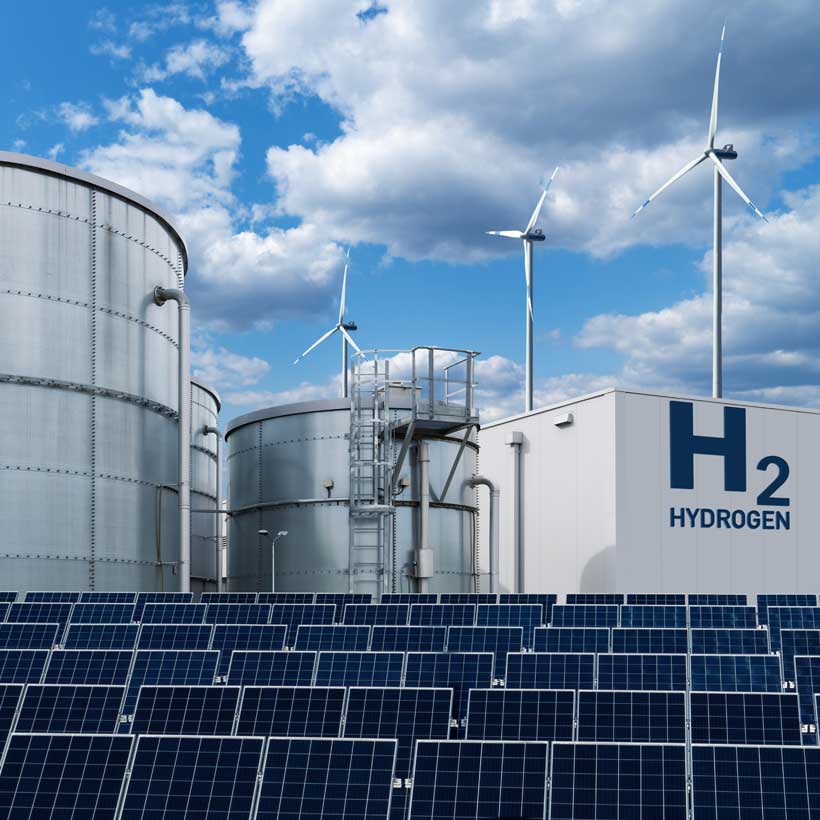Hydrogen production
Platinum is essential to the technology that produces clean hydrogen through proton exchange membrane (PEM) electrolysers, and the PEM technology used in fuel cell electric vehicles (FCEVs).
PEM electrolysers and fuel cells rely on membranes that require catalysts on both the cathode and the anode sides. Only with these catalysts can the electrochemical reactions occur; in electrolysers they split water into hydrogen and oxygen, and in fuel cells they combine hydrogen and oxygen to produce power, with water and heat being formed as by-products. PEM electrolyser and fuel cell stacks, consisting of hundreds of catalyst-coated membranes (CCMs), are harsh acidic and oxidising environments, requiring catalysts that can withstand the conditions and deliver sustained high performance over the stack lifetime.
Platinum and iridium are irreplaceable in these technologies, thanks to their unique combination of catalytic activity and durability.
Do we have enough iridium to scale up hydrogen production?
It has been argued that the scarcity of iridium and its uniqueness in its applications creates an impossible challenge for scaling up PEM electrolysis to the capacities needed. However, this is not true. Research undertaken by industry players suggests that with appropriate management, notably through thrifting and recycling, there will be enough iridium and platinum available to allow PEM electrolysis and PEM fuel cells to scale up to the necessary levels to make a major contribution to the energy transition.
The Hydrogen Council estimates that to reach net-zero emissions by 2030, PEM capacity will need to increase from today’s level of <1 GW to potentially 80-100 GW by 2030 (assuming a 40% PEM market share). In 2021, the amount of iridium required for 1 GW of electrolyser capacity was 400 kg, leading some to argue that the 2030 target would require 32-40 tonnes of iridium. To ensure that electrolyser production can ramp up and the capacity of iridium is enough, iridium must be used much more efficiently by formulating much more efficient catalysts, membranes, and maximising performance, thereby decreasing the amount of iridium required for every GW.
At the same time, the recycling of iridium from the PEM sector must be ensured to become available for reuse in the same application.
Substantial quantities of iridium are currently circulating constantly in closed loops in existing applications, which is generally unseen by the market.
For some applications such as spark plugs, efficient recycling routes have not yet been established, although tonnes of iridium could be made accessible to the market. Here, the legislator (e.g., the EU) could step in to incentivize the recycling of material from scrap
Learn more about the metal in the IPA White Paper on Iridium.







